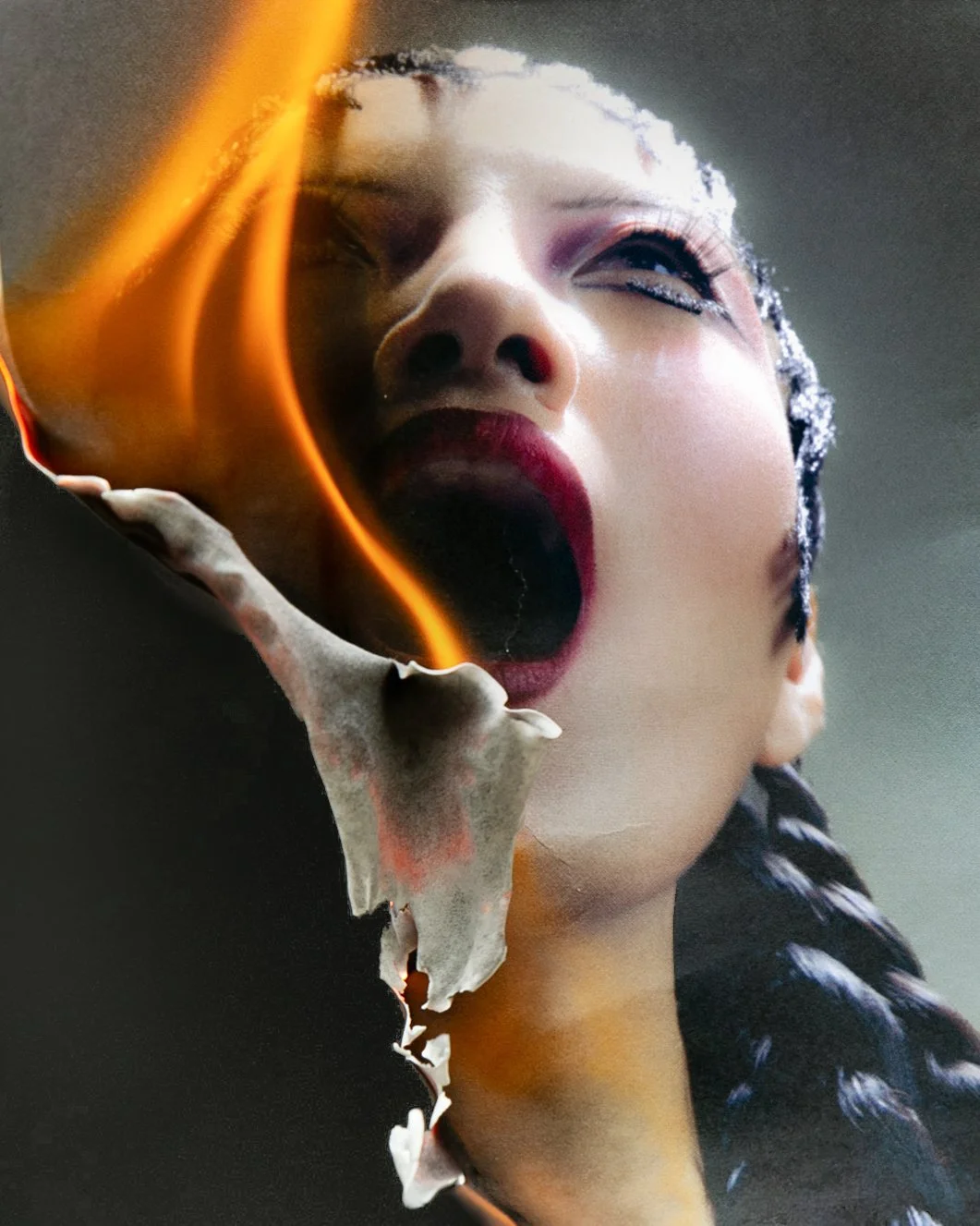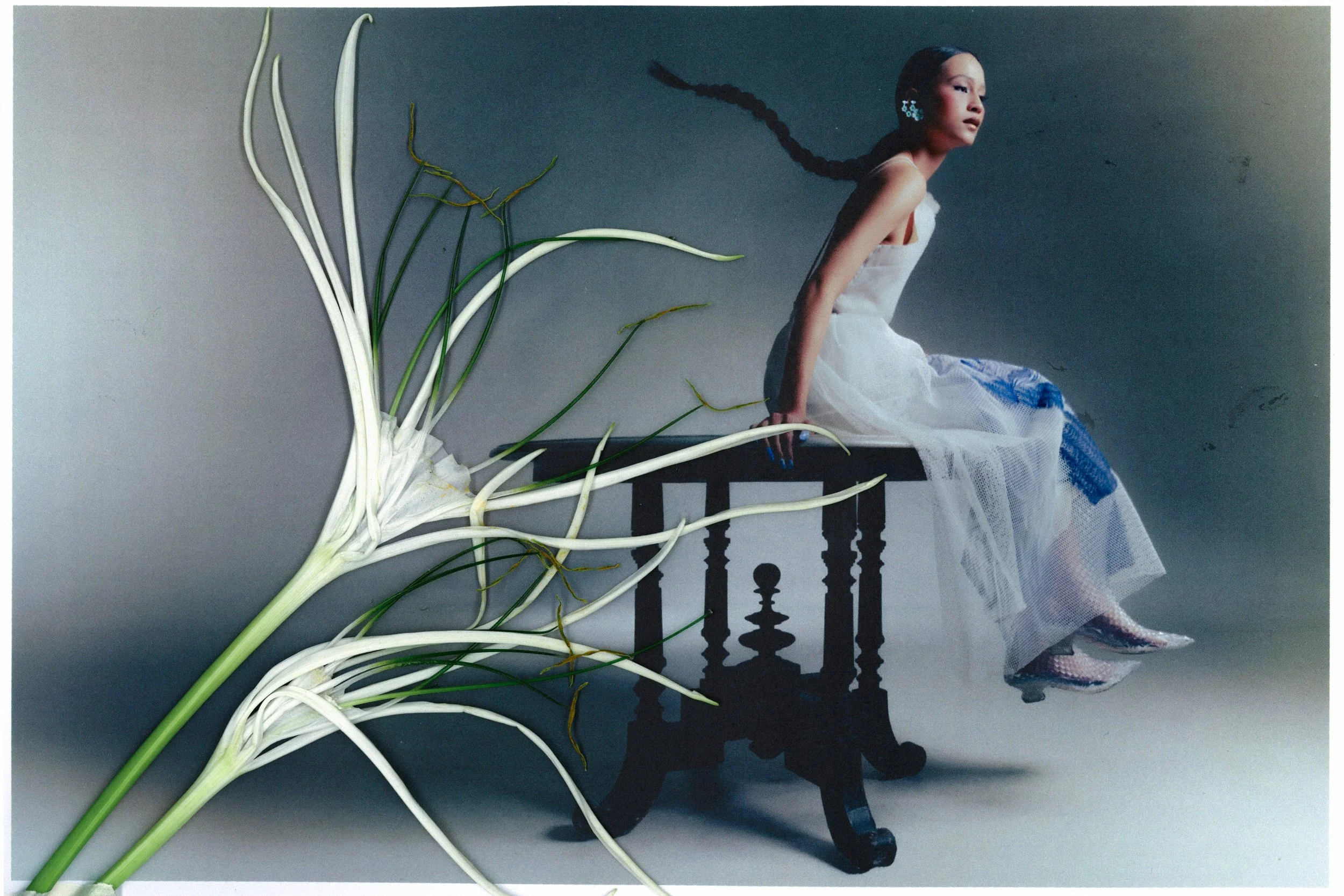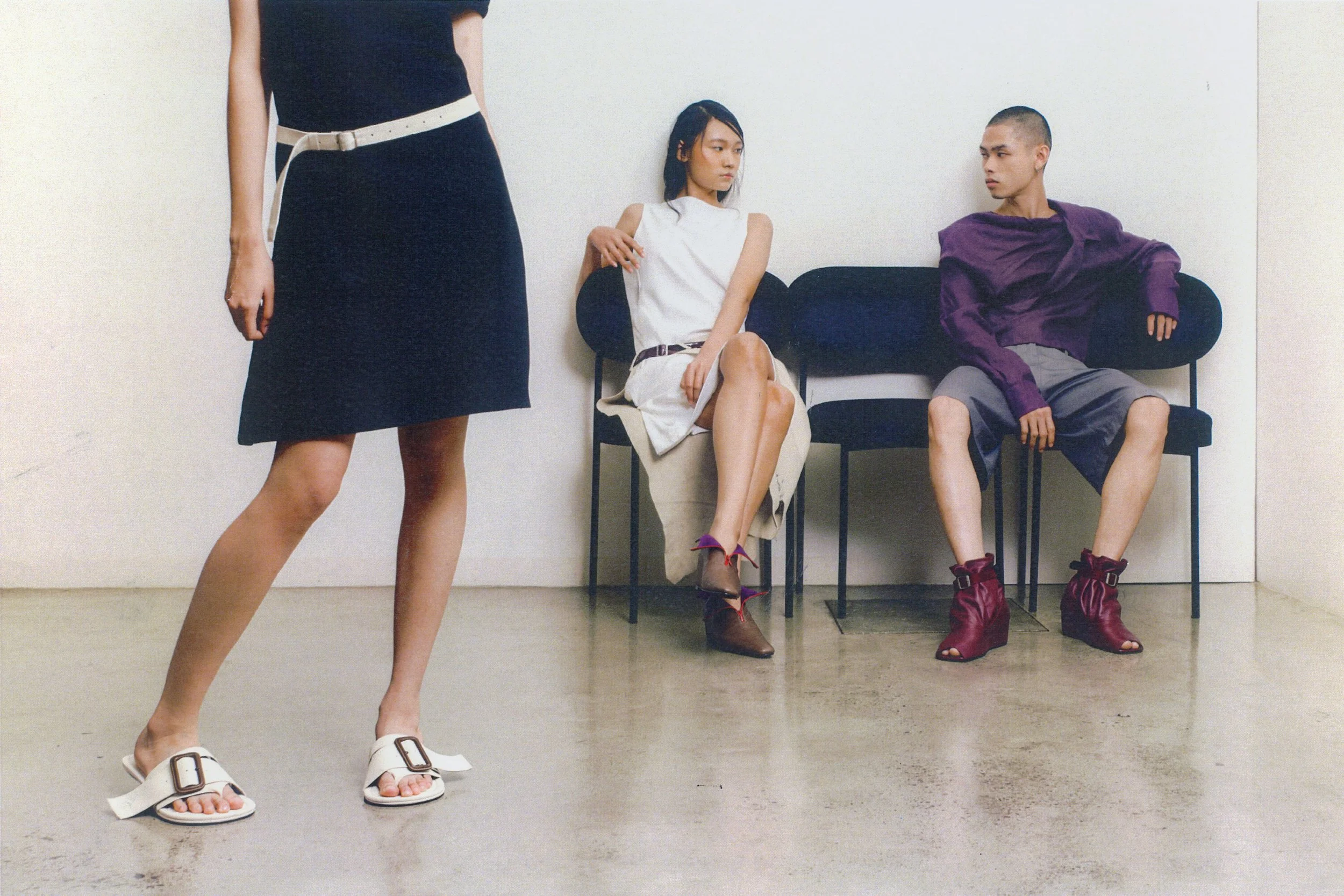Through the Lens: Julius Juan Justianto
Exploring cinematic language and gestures through dreamlike images
‘Through the Lens’ is a series that explores in detail the images of fashion image-makers in Southeast Asia, shedding light on their creative and technical processes.
Julius Juan Justianto views photography as less about a fixed process and more about instinct and response. Influenced early on by the powerful imagery of fashion campaigns and the storytelling traditions of figures like Irving Penn and Steven Meisel, the Jakarta-based photographer has since developed a style that feels cinematic, emotionally charged, and attuned to atmosphere.
That approach has carried across a range of projects, from the cover of Dew Magazine and campaigns for local designers to editorials in international titles including a recent visual essay for Glamcult. Whether on set or in post-production, Julius treats every stage as part of the storytelling, where lighting, set design and editing become tools to push an image beyond documentation and into something more atmospheric, resonant and open-ended.
'Heart's Desire' for Schon!, 2024. Image courtesy of Julius Juan Justianto.
Hi, Julius! Could you start by telling us what first drew you to image-making? Who or what were your earliest influences in photography?
The first time I realised I was into photography was back when I was studying in Singapore. I used to hang out around Orchard Road a lot, mostly window shopping, but I would often find myself stopping to look at the ads in the store windows. The luxury brands especially had beautiful visuals. At some point, I became curious about who was actually behind them. I remember one Prada campaign featuring Dane DeHaan that was shot by Annie Leibovitz. That was one of those images that stayed with me.
I was also drawn to Saint Laurent during Hedi Slimane’s time as creative director, when he photographed most of the campaigns himself. The images felt so strong and powerful. Around the same time, I was also following Mert and Marcus.
At first, I was fascinated by commercials, but over time I started exploring fashion more seriously, especially its storytelling side. I began exploring archive magazines and discovered the works of Irving Penn, Alexey Brodovitch, and later Steven Meisel, Nick Knight, and David Sims.
Earlier this year, you photographed the cover of Dew Issue 56. Can you walk us through the creative process behind that shoot?
I do not follow a strict process when I work. I usually go with what feels right at the moment. For this cover, which was an advertorial for the local fashion brand Tandamata, I collaborated with stylist Vanya Harapan, makeup artist Vanesha Ayu, and model Chelsea Ong.
I had worked with Vanya before on Sapto Djojokartiko’s campaign for Pillar, which Mas Aji, the founder of Dew Magazine, had seen and liked. He reached out wanting to create something that picked up from that project, and that became our starting point. From there, the rest of the shoot came together organically as we developed the ideas as a team.
Dew Magazine’s Issue 56 Cover ‘Blooming inwards’, 2025. Image courtesy of Julius Juan Justianto.
Dew Magazine’s Issue 56 Cover ‘Blooming inwards’, 2025. Image courtesy of Julius Juan Justianto.
Working with stylists and set designers is clearly important to your process. Has there been a particular collaboration that challenged your usual approach but ultimately opened up a new way of thinking or working?
Working with new people on set always opens up a fresh way of thinking for me. It teaches me new ways of how ideas come to life, how I can complement their ideas, and how we can build something greater together. For example, when I worked on the editorial for Design Scene that featured Lutesha, Gisella Juwono, the stylist and I had to really find a way to step out of our usual methods, and the result turned out really well. That shoot has since been referenced by many of my clients.
What made it memorable was how different it felt from both of our previous works. We paid close attention to details, from the colours, the editing style, and all the smaller elements that came together to form the story.
‘midnight daydream’ for Design Scene, 2024. Image courtesy of Julius Juan Justianto.
‘midnight daydream’ for Design Scene, 2024. Image courtesy of Julius Juan Justianto.
In your recent editorials for Pap Magazine, Schön! Magazine, and Design Scene, post-production plays a strong role in shaping the images. For you, how much of the storytelling happens in editing versus behind the camera?
For me, the most important part of post-production lies in curation. That means choosing frames that hold a particular emotion or gesture, and then using editing techniques to amplify those moments. Sometimes that means adding textures or colour. Other times, it can mean intentionally breaking down or “destroying” the image. I see editing as a complementary tool that helps me extend the story.
Most of the experimentation I do in editorials happens quite spontaneously. Once the photographs are taken, I start thinking about how to push the story further. That instinct ties back to my background in graphic design, so I guess it is my way of merging two mediums and letting them inform each other.
You recently worked together with stylist Allysha Nila to create a visual essay for Glam Cult. What ideas or themes were you exploring through that project, and how did you want the audience to engage with the imagery?
This project began as something personal between me and Ally. She reached out saying she wanted to create something beautiful yet absurd, and I immediately understood what she meant.
The concept was loosely inspired by the internet. At the time, I was fascinated by the idea of liminal spaces, those viral images that feel hauntingly beautiful, where physical spaces take on a dreamlike quality and blur the line between reality, memory, and dreams. I started pulling references from old films that carried a similar atmosphere. I studied different cinematic lighting and worked on translating that to our shoot. Together with the team, we shaped the fashion, hair, and makeup to mirror the theme. We titled the project Lilies and Oblivion, to suggest how something can be both beautiful and elusive, impossible to fully pin down.
On set, we leaned into experimentation with lighting, trying techniques I had never attempted before. It became a process of learning by doing. When I eventually shared the project with Glamcult, they immediately connected with both the concept and the visuals.
‘lilies and oblivion’ for Glam Cult, 2025. Image courtesy of Julius Juan Justianto.
‘lilies and oblivion’ for Glam Cult, 2025. Image courtesy of Julius Juan Justianto.
Another key part of your images are the layered compositions. How did you approach this in campaigns for Erlina and Made to Wander (MTW)?
With Erlina’s collection, the pieces have a modular quality, and can be styled in multiple ways. To reflect that, I decided to show several poses of the same model within a single frame, each demonstrating a different way to wear the clothes. The campaign itself explored the frustration and exhaustion of overworking, so we tried to depict the gestures of someone moving, walking, or even sleeping under the weight of fatigue.
For MTW, the starting point was their references of people waiting in line at a casting or fashion show, as the collection launched during Jakarta Fashion Week 2025. I see MTW as an up-and-coming label that everyone is talking about. So we adapted these two ideas and the final images showed the models in different waiting-room scenarios, always in conversation, mirroring how the brand itself has become a topic of conversation.
MTW JFW Collection 2025 Campaign. Image courtesy of Julius Juan Justianto.
How does living and working in Jakarta influence the way you approach and capture your subjects?
I love Jakarta and the industry here, but working with the same people all the time can start to feel a little mechanical, almost as if you already know how things will flow and what the outcome will be. That is why I like to shake things up, to keep the process from becoming too predictable. Collaborating with different people brings fresh perspectives, and for me, that is essential to pushing image-making forward.
Looking at photography today, what excites you most about the way people are consuming images? On the flip side, are there aspects that frustrate you?
I enjoy conducting research, and honestly, being chronically online helps! I am constantly looking at young designers, photographers, and creators who are driving the industry forward. Photography today is far more accessible than it once was. Sharing your work with a wide audience can happen almost instantly, largely thanks to social media. It’s a completely different landscape compared to 20 years ago, when sharing work often meant organizing exhibitions, which were costly and difficult to put together.
That immediacy is exciting, though it comes with challenges. The ease of publishing can devalue the medium, as anyone can now call themselves a photographer, and with so much supply in the market, there is bound to be a decline in value. Still, I believe that with perseverance and a strong, distinct voice, we will be okay.
Erlina Erlina '27:00' Collection Campaign, 2025. Image courtesy of Julius Juan Justianto.
Finally, what projects are you currently working on, and what new work can we look forward to from you?
I am currently wrapping up a few editorials and working on several campaigns for local brands. The end of the year is always pretty packed, but it has been exciting, because I feel like clients today are more open to trying something fresh.
As for what’s next… I would like to keep that a surprise. Never let them know your next move.









